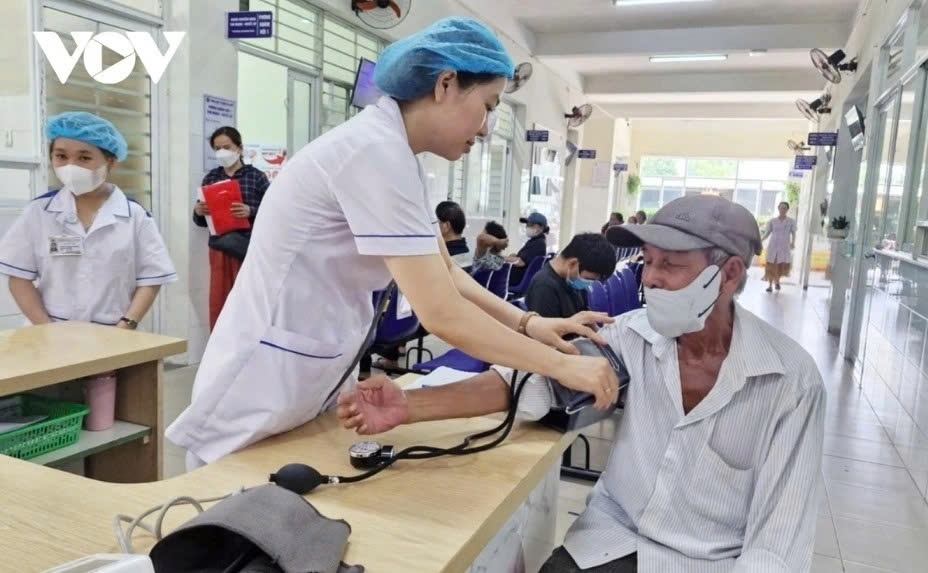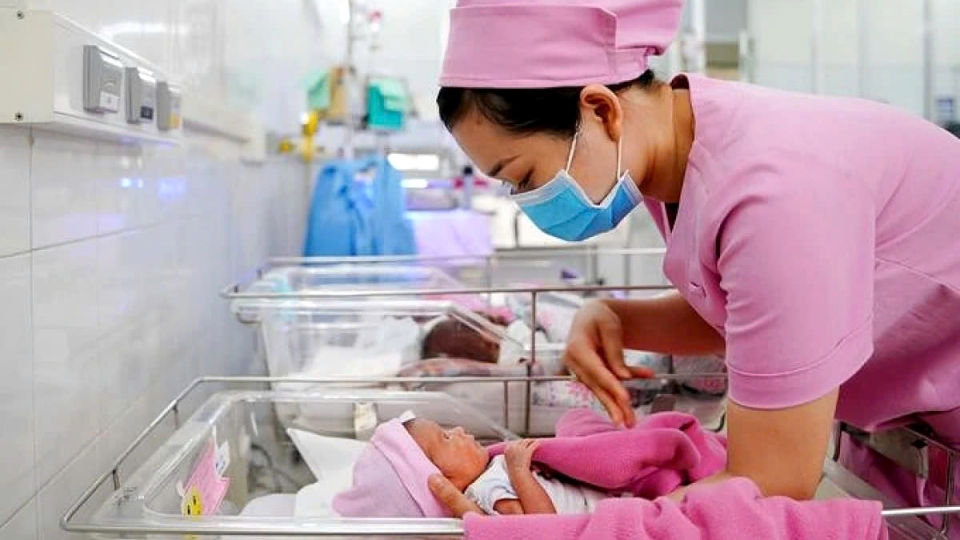Population aging in Vietnam: threat or opportunity?
VOV.VN - Vietnam is entering one of the world’s fastest aging phases, straining its welfare, health care, and economy. Yet, experts believe proper planning can turn this challenge into an opportunity for sustainable social reform.
Declining birth rate, rapid aging

According to the Ministry of Health, Vietnam has maintained replacement-level fertility since 2006 and is currently in its demographic “golden population” period. However, the birth rate has been steadily decreasing in recent times, from 2.11 children per woman in 2021 to 1.91 in 2024, falling below the replacement threshold of 2.1.
If this trend continues, the country will exit the golden population phase by 2039 and enter negative population growth after 2054.
United Nations data shows that by 2029, Vietnam will have approximately 17.3 million people aged 60 or older, making up 16.5% of the total population, and the number of these elderly people is projected to rise to 22.8 million by 2039 or 20.6% of the total population.
Workforce and health care under strain
Experts cite increasing life expectancy and declining fertility as the primary causes of aging, resulting in a shrinking labour force, reduced productivity, and heavier burdens on social welfare systems.
The healthcare system faces mounting pressure to serve an aging population, especially with chronic illnesses such as heart disease, diabetes, and neurodegenerative conditions. This will lead to overcrowding in hospitals and medical facilities, as patient numbers rise while staffing and equipment remain limited.
Economist Dr. Nguyen Minh Phong says Vietnam’s population aging is accelerated by demographic patterns linked to the post-war baby boom. Many from that generation are now elderly, while younger generations are having fewer children or none at all.
“Some young people don’t marry, and some marry but choose not to have children, resulting in a replacement birth rate that lags behind the aging pace of the older generation,” notes the expert.
Undeniably, he states, population aging has socio-economic implications, such as increased burdens on workers, lower quality of life, labour shortages, slower economic growth and national strength at risk.
“A shrinking workforce can lead to reduced output and innovation, limiting national growth. Over time, countries may lose global influence due to weaker economic performance and demographic imbalances,” he analyses.
A growing trend among young people is the decision to delay or forgo marriage and parenthood. Dr. Hoang Tu Anh, director of the Centre for Creative Initiatives in Health and Population (CCIHP), attributes this to financial stress, shifting values, and a lack of support policies.
“We need to understand why people are hesitant to have children with a view to creating policies that address their concerns,” she says. “We must stop viewing the elderly as a burden and start seeing them as contributors to the economy and society.”
Population aging: Not just a threat

Despite its challenges, population aging is not necessarily a looming disaster if it is approached correctly. Increased life expectancy should be celebrated as a development achievement. With the right support, older adults can remain active and productive.
“Population aging is an inevitable part of a developed society, not just in Vietnam but worldwide. Instead of treating it as a threat to be avoided or stopped which is impossible, we should focus on slowing the pace of aging where possible and responding to it more effectively,” says Dr. Anh.
According to the expert, as more people today choose not to have children, it's important to understand why and find ways to support them. At the same time, the state needs to create more job opportunities for everyone, including the elderly so they can continue contributing to society and the economy.
“These contributions are valuable, and we must not view older people as a burden. If we can do this, it will help slow down the aging process and allow society to adapt in a healthier way, making population aging no longer something to fear,” she analyses.
To tackle population aging, many experts emphasise the need for a shift in social perception by valuing the contributions of older adults rather than seeing them solely as dependents. At the same time, policies should encourage higher birth rates among young couples, expand access to safe and engaging spaces for children, and improve early childhood education so parents feel supported in work – life balance.
With proper preparation, population aging doesn’t have to be a crisis, it can become an opportunity. To adapt to the situation, Vietnam should urgently strengthen its social welfare system and develop quality healthcare services for the elderly, aiming to enhance their well-being.
Aging is an irreversible trend driven by lower fertility rates and longer lifespans, leading to a growing proportion of older people. The crux of the matter, experts say, is not to resist aging, but to be prepared for it.




